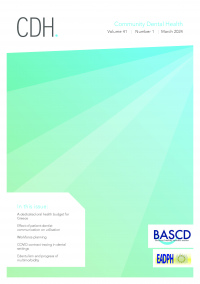June 2016
Fluoride and Oral Health
Abstract
Fluoride and Oral Health D.M. O’Mullane, R.J. Baez, S. Jones, M.A. Lennon, P.E. Petersen, A.J. RuggGunn, H. Whelton and G.M. Whitford The discovery during the first half of the 20th century of the link between natural fluoride, adjusted fluoride levels in drinking water and reduced dental caries prevalence proved to be a stimulus for worldwide on-going research into the role of fluoride in improving oral health. Epidemiological studies of fluoridation programmes have confirmed their safety and their effectiveness in controlling dental caries. Major advances in our knowledge of how fluoride impacts the caries process have led to the development, assessment of effectiveness and promotion of other fluoride vehicles including salt, milk, tablets, toothpaste, gels and varnishes. In 1993, the World Health Organization convened an Expert Committee to provide authoritative information on the role of fluorides in the promotion of oral health throughout the world (WHO TRS 846, 1994). This present publication is a revision of the original 1994 document, again using the expertise of researchers from the extensive fields of knowledge required to successfully implement complex interventions such as the use of fluorides to improve dental and oral health. Financial support for research into the development of these new fluoride strategies has come from many sources including government health departments as well as international and national grant agencies. Key words: fluorides, drinking water, salt, milk, supplements, toothpastes, varnishes and gels




